One growth ring is formed per year and
(a) It is called as annular ring
(b) It is composed of spring and autumn wood
(c ) It is result of seasonal activity of cambium
(d) It is very distinct in plants of tropical climate
(a), (b) and (c ) are wrong
(a), (b) , (c ) and (d) are correct
Only (d) incorrect
(b) , (c ) and (d) are correct
The correct Answer is:3
Step by step video & image solution for One growth ring is formed per year and (a) It is called as annular ring (b) It is composed of spring and autumn wood (c ) It is result of seasonal activity of cambium (d) It is very distinct in plants of tropical climate by Biology experts to help you in doubts & scoring excellent marks in Class 12 exams.
Updated on:21/07/2023Topper's Solved these Questions
- ANATOMY OF FLOWERING PLANTS BOOK - VMC MODULES ENGLISHCHAPTER - ANATOMY OF FLOWERING PLANTS EXERCISE - IMPECCABLE
59 Videos
- ANATOMY OF FLOWERING PLANTS BOOK - VMC MODULES ENGLISHCHAPTER - ANATOMY OF FLOWERING PLANTS EXERCISE - ENABLE
50 Videos
- BIODIVERSITY AND CONSERVATIONBOOK - VMC MODULES ENGLISHCHAPTER - BIODIVERSITY AND CONSERVATIONEXERCISE - IN-CHAPTER EXERCISE-B
10 Videos
Similar Questions
Knowledge Check
Which of the following is a reason for the greater biological diversity of tropical regions ?
(a) Tropical latitudes have remained almost undisturbed for millions of years.
(b) Tropical environments are less seasonal, relatively more constant and predictable.
(c) More solar energy is available in the tropics, resulting in high productivity.
(d) All of theseATropical latitudes have remained almost undisturbed for millions of years.BTropical environments are less seasonal, relatively more constant and predictable.CMore solar energy is available in the tropics, resulting in high productivity.DAll of theseAbout 750 years ago, a powerful volcano erupted somewhere on Earth, kicking off a centuries-long cold snap known as the Little Ice Age. Identifying the volcano responsible has been tricky.
That a powerful volcano erupted somewhere in the world, sometime in the Middle Ages, is written in polar ice cores in the form of layers of sulfate deposits and tiny shards of volcanic glass. These cores suggest that the amount of sulfur the mystery volcano sent into the stratosphere put it firmly among the ranks of the strongest climate-perturbing eruptions of the current geological epoch, the Holocene, a period that stretches from 10,000 years ago to the present. A haze of stratospheric sulfur cools the climate by reflecting solar energy back into space.
In 2012, a team of scientists led by geochemist Gifford Miller strengthened the link between the mystery eruption and the onset of the Little Ice Age by using radiocarbon dating of dead plant material from beneath the ice caps on Baffin Island and Iceland, as well as ice and sediment core data, to determine that the cold summers and ice growth began abruptly between 1275 and 1300 C.E. (and became intensified between 1430 and 1455 C.E.). Such a sudden onset pointed to a huge volcanic eruption injecting sulfur into the stratosphere and starting the cooling. Subsequent, unusually large and frequent eruptions of ther volcanoes, as well as sea-ice/ocean feedbacks persisting long after the aerosols have been removed from the atmosphere, may have prolonged the cooling through the 1700s. Volcanologist Franck Lavigne and colleagues now think they’ve identified the volcano in question: Indonesia’s Samalas. One line of evidence, they note, is historical records. According to Babad Lombok, records of the island written on palm leaves in Old Javanese, Samalas erupted catastrophically before the end of the 13th century, evastating surrounding villages—including Lombok’s capital at the time, Pamatan—with ash and fast-moving sweeps of hot rock and gas called pyroclastic flows. The researchers then began to reconstruct the formation of the large, 800-meter-deep caldera [a basin-shaped volcanic crater] that now sits atop the volcano. They examined 130 outcrops on the flanks of the olcano, exposing sequences of pumice—ash hardened into rock—and other pyroclastic material. The volume of ash deposited, and the estimated height of the eruption plume (43 kilometers above sea level) put the eruption’s magnitude at a minimum of 7 on the volcanic explosivity index (which has a scale of 1 to 8)—making it one of the largest known in the Holocene. The team also performed radiocarbon analyses on carbonized tree trunks and branches buried within the pyroclastic deposits to confirm the date of the eruption, it could not, they concluded, have happened before 1257 C.E., and certainly happened in the 13th century. It’s not a total surprise that an Indonesian volcano might be the source of the eruption, Miller says. “An equatorial eruption is more consistent with the apparent climate impacts.” And, he adds, with sulfate appearing in both polar ice caps—Arctic and Antarctic—there is “a strong consensus” that this also supports an equatorial source. Another possible candidate—both in terms of timing and geographical location—is Ecuador’s Quilotoa, estimated to have last erupted between 1147 and 1320 C.E. But when Lavigne’s team examined shards of volcanic glass from this volcano, they found that they didn’t match the chemical composition of the glass found in polar ice cores, whereas the Samalas glass is a much closer match. That, they suggest, further strengthens the case that Samalas was responsible for the medieval “year without summer” in 1258 C.E.
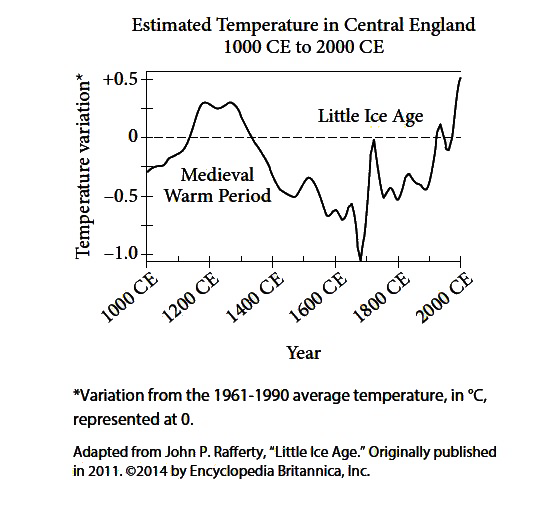
The main purpose of the passage is toAdescribe periods in Earth’s recent geologic history.Bexplain the methods scientists use in radiocarbon analysis.Cdescribe evidence linking the volcano Samalas to the Little Ice Age.Dexplain how volcanic glass forms during volcanic eruptions.About 750 years ago, a powerful volcano erupted somewhere on Earth, kicking off a centuries-long cold snap known as the Little Ice Age. Identifying the volcano responsible has been tricky.
That a powerful volcano erupted somewhere in the world, sometime in the Middle Ages, is written in polar ice cores in the form of layers of sulfate deposits and tiny shards of volcanic glass. These cores suggest that the amount of sulfur the mystery volcano sent into the stratosphere put it firmly among the ranks of the strongest climate-perturbing eruptions of the current geological epoch, the Holocene, a period that stretches from 10,000 years ago to the present. A haze of stratospheric sulfur cools the climate by reflecting solar energy back into space.
In 2012, a team of scientists led by geochemist Gifford Miller strengthened the link between the mystery eruption and the onset of the Little Ice Age by using radiocarbon dating of dead plant material from beneath the ice caps on Baffin Island and Iceland, as well as ice and sediment core data, to determine that the cold summers and ice growth began abruptly between 1275 and 1300 C.E. (and became intensified between 1430 and 1455 C.E.). Such a sudden onset pointed to a huge volcanic eruption injecting sulfur into the stratosphere and starting the cooling. Subsequent, unusually large and frequent eruptions of ther volcanoes, as well as sea-ice/ocean feedbacks persisting long after the aerosols have been removed from the atmosphere, may have prolonged the cooling through the 1700s. Volcanologist Franck Lavigne and colleagues now think they’ve identified the volcano in question: Indonesia’s Samalas. One line of evidence, they note, is historical records. According to Babad Lombok, records of the island written on palm leaves in Old Javanese, Samalas erupted catastrophically before the end of the 13th century, evastating surrounding villages—including Lombok’s capital at the time, Pamatan—with ash and fast-moving sweeps of hot rock and gas called pyroclastic flows. The researchers then began to reconstruct the formation of the large, 800-meter-deep caldera [a basin-shaped volcanic crater] that now sits atop the volcano. They examined 130 outcrops on the flanks of the olcano, exposing sequences of pumice—ash hardened into rock—and other pyroclastic material. The volume of ash deposited, and the estimated height of the eruption plume (43 kilometers above sea level) put the eruption’s magnitude at a minimum of 7 on the volcanic explosivity index (which has a scale of 1 to 8)—making it one of the largest known in the Holocene. The team also performed radiocarbon analyses on carbonized tree trunks and branches buried within the pyroclastic deposits to confirm the date of the eruption, it could not, they concluded, have happened before 1257 C.E., and certainly happened in the 13th century. It’s not a total surprise that an Indonesian volcano might be the source of the eruption, Miller says. “An equatorial eruption is more consistent with the apparent climate impacts.” And, he adds, with sulfate appearing in both polar ice caps—Arctic and Antarctic—there is “a strong consensus” that this also supports an equatorial source. Another possible candidate—both in terms of timing and geographical location—is Ecuador’s Quilotoa, estimated to have last erupted between 1147 and 1320 C.E. But when Lavigne’s team examined shards of volcanic glass from this volcano, they found that they didn’t match the chemical composition of the glass found in polar ice cores, whereas the Samalas glass is a much closer match. That, they suggest, further strengthens the case that Samalas was responsible for the medieval “year without summer” in 1258 C.E.
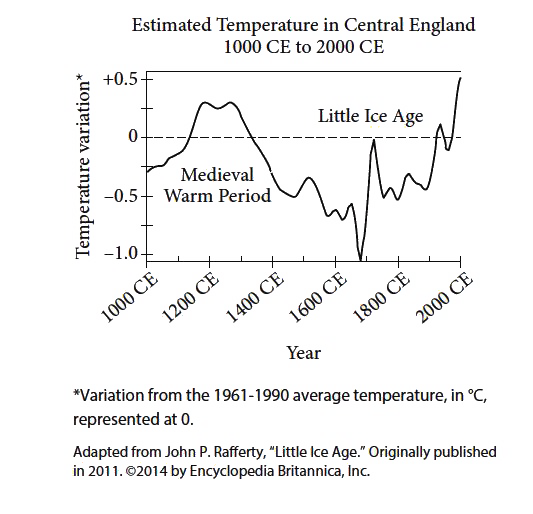
Which choice best supports the claim that Quilotoa was not responsible for the Little Ice Age?ALines 3-4 (“Identifying . . . tricky”)BLines 26-28 (“Such a . . . cooling”)CLines 43-46 (“The researchers . . . atop the volcano”)DLines 71-75 (“But . . . closer match”)
Growth rings are formed by the activity of
(a) Extrasteral cambium
(b) Intrasteler cambium
(c) Interstelar cambium
(d) Both b and c
View Solutiona. Statement- 1 and Statement- 2 are true, and state-ment- 2 is the correct explanation of Statement- 1.
b. Statement- 1 and Statement- 2 are true but Statement- 2 is not the correct explanation of Statement- 1.
c. Statement- 1 is true and Statement- 2 is false.
d. Statement- 1 is false and Statement- 2 is true.
e. Statement- 1 is false and Statement- 2 is false.
Statement- 1:
Compound (I) is formed not (II).
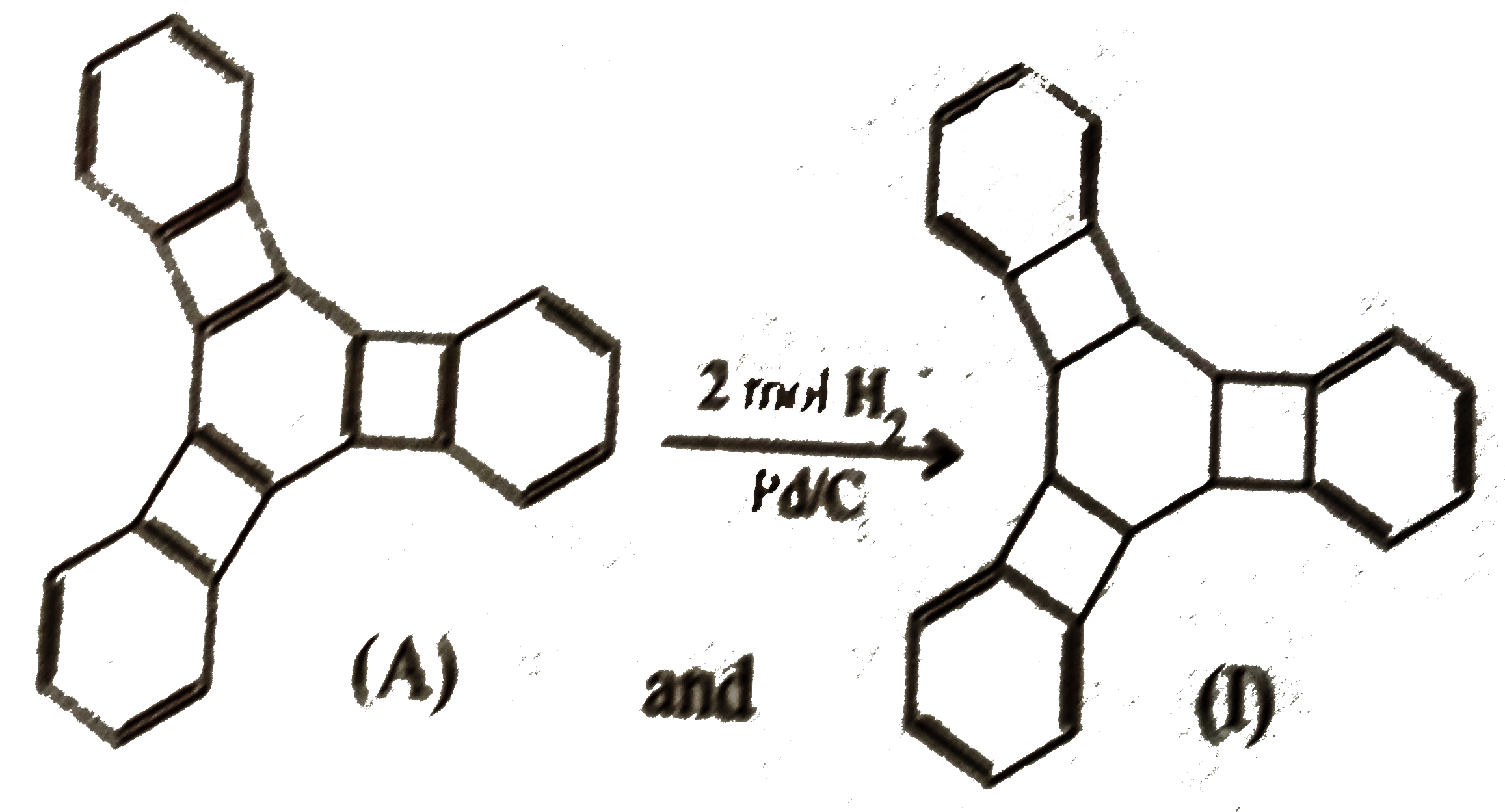 and
and 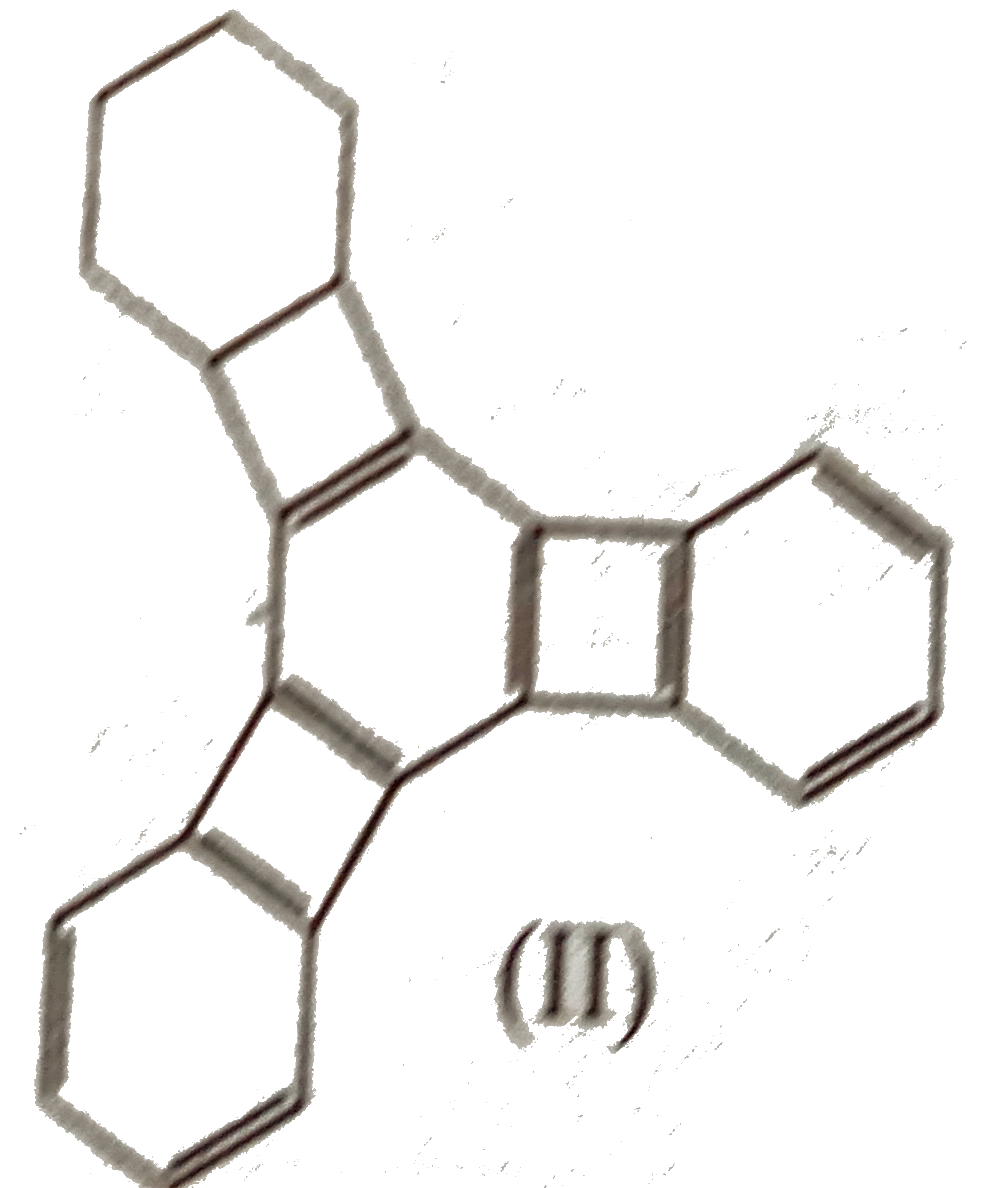
Statement- 2:
Due to the reduction of central ring, 3 four-membered anti-aromatic rings become stable to from (I). In (II), due to the reduction of terminal ring, only one anti-aromatic ring can be stabilised.
View SolutionRead the following statements and choose the correct ones
A. Increase in length of a plant organ against time gives sigmoid curves.
B. Incase of microorganisms showing geometric growth, all the daughter cells divide.
C. Environmental factors like light and gravity affects different stages of growth of plants.
D. A tree showing seasonal activities doesn't show a typical S-shaped curve.
View SolutionAssertion (A):∧m(H⊕) and ∧m(cOH) ions are very much higher than those of other ions.
Reason (R):It is due to proton jump from one water molecule to another resulting in a more rapid transfer of positive charge form one region to another.
(a)If both (A) and (R) are correct, and (R) is the correct explanation of (A).
(b)If both (A) and (R) are correct, but (R) is not the correct explanation of (A).
(c)If (A) is correct, but (R) is incorrect.
(d)If (A) is incorrect, (R) is correct.
View SolutionAbout 750 years ago, a powerful volcano erupted somewhere on Earth, kicking off a centuries-long cold snap known as the Little Ice Age. Identifying the volcano responsible has been tricky.
That a powerful volcano erupted somewhere in the world, sometime in the Middle Ages, is written in polar ice cores in the form of layers of sulfate deposits and tiny shards of volcanic glass. These cores suggest that the amount of sulfur the mystery volcano sent into the stratosphere put it firmly among the ranks of the strongest climate-perturbing eruptions of the current geological epoch, the Holocene, a period that stretches from 10,000 years ago to the present. A haze of stratospheric sulfur cools the climate by reflecting solar energy back into space.
In 2012, a team of scientists led by geochemist Gifford Miller strengthened the link between the mystery eruption and the onset of the Little Ice Age by using radiocarbon dating of dead plant material from beneath the ice caps on Baffin Island and Iceland, as well as ice and sediment core data, to determine that the cold summers and ice growth began abruptly between 1275 and 1300 C.E. (and became intensified between 1430 and 1455 C.E.). Such a sudden onset pointed to a huge volcanic eruption injecting sulfur into the stratosphere and starting the cooling. Subsequent, unusually large and frequent eruptions of ther volcanoes, as well as sea-ice/ocean feedbacks persisting long after the aerosols have been removed from the atmosphere, may have prolonged the cooling through the 1700s. Volcanologist Franck Lavigne and colleagues now think they’ve identified the volcano in question: Indonesia’s Samalas. One line of evidence, they note, is historical records. According to Babad Lombok, records of the island written on palm leaves in Old Javanese, Samalas erupted catastrophically before the end of the 13th century, evastating surrounding villages—including Lombok’s capital at the time, Pamatan—with ash and fast-moving sweeps of hot rock and gas called pyroclastic flows. The researchers then began to reconstruct the formation of the large, 800-meter-deep caldera [a basin-shaped volcanic crater] that now sits atop the volcano. They examined 130 outcrops on the flanks of the olcano, exposing sequences of pumice—ash hardened into rock—and other pyroclastic material. The volume of ash deposited, and the estimated height of the eruption plume (43 kilometers above sea level) put the eruption’s magnitude at a minimum of 7 on the volcanic explosivity index (which has a scale of 1 to 8)—making it one of the largest known in the Holocene. The team also performed radiocarbon analyses on carbonized tree trunks and branches buried within the pyroclastic deposits to confirm the date of the eruption, it could not, they concluded, have happened before 1257 C.E., and certainly happened in the 13th century. It’s not a total surprise that an Indonesian volcano might be the source of the eruption, Miller says. “An equatorial eruption is more consistent with the apparent climate impacts.” And, he adds, with sulfate appearing in both polar ice caps—Arctic and Antarctic—there is “a strong consensus” that this also supports an equatorial source. Another possible candidate—both in terms of timing and geographical location—is Ecuador’s Quilotoa, estimated to have last erupted between 1147 and 1320 C.E. But when Lavigne’s team examined shards of volcanic glass from this volcano, they found that they didn’t match the chemical composition of the glass found in polar ice cores, whereas the Samalas glass is a much closer match. That, they suggest, further strengthens the case that Samalas was responsible for the medieval “year without summer” in 1258 C.E.
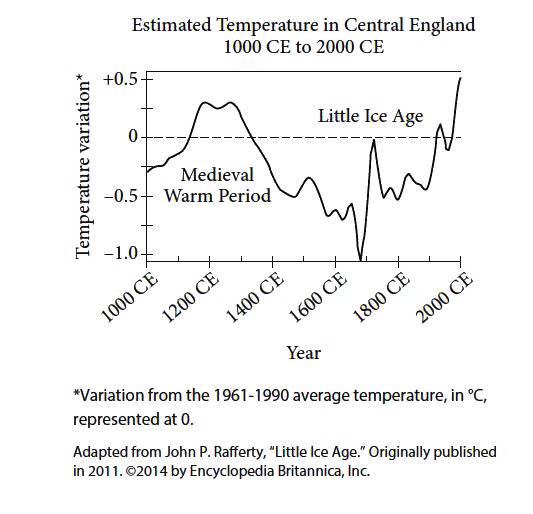
As used in line 68, the phrase “Another possible candidate” implies that
View Solution
